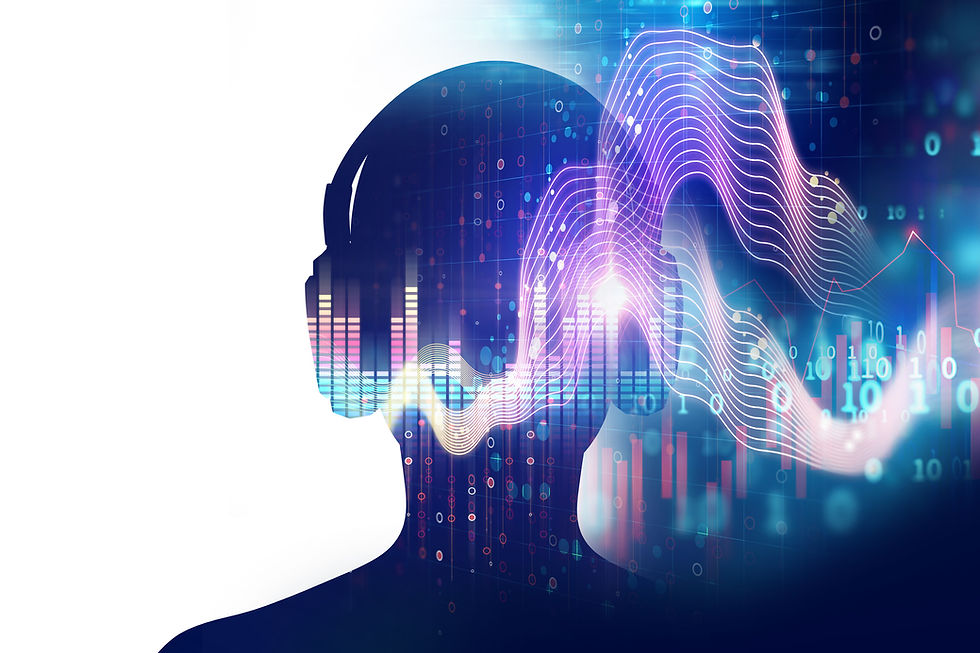How Digital Pianos Shape Young Minds: Music, Brainpower, and Lifelong Benefits
- Electric Piano Land

- Aug 7
- 7 min read
Updated: Aug 29

Whether you're a beginner eager to learn or a seasoned pianist needing flexibility, digital pianos have evolved into serious instruments that rival their acoustic counterparts. Gone are the days of tinny tones and plasticky keys — modern digital pianos now offer authentic feel, dynamic expression, and features that go far beyond traditional pianos. For anyone considering adding an instrument to their home or upgrading their current setup, digital pianos offer a compelling mix of convenience, sound quality, and innovation. In this article, we’ll explore why a digital piano might be the right choice for you.
In a world filled with academic pressure and constant digital distractions, one timeless activity stands out for developing stronger, healthier young minds: learning to play the piano. Today, thanks to modern technology, digital pianos make it easier and more accessible than ever for families to bring these benefits home.
Digital pianos offer a tech-forward, flexible, and family-friendly approach that unlocks the same proven brain-boosting advantages as traditional acoustic instruments. From improving memory and focus to nurturing emotional intelligence and confidence, piano study lays down a lifelong foundation for success.
Here’s how digital pianos support brain development, academic achievement, and emotional growth — and why they are a smart investment for any family.
Full Brain Activation at Every Practice Playing the piano is a workout for the entire brain. Each hand performs different roles, requiring constant communication between the left and right hemispheres. This strengthens the corpus callosum, the nerve bundle that connects both sides of the brain, enhancing:
Processing speed: Children who play piano respond faster to stimuli and information, improving how they handle classroom tasks and social interactions.
Motor coordination: Piano practice refines fine motor skills by coordinating hand movements with visual and auditory input.
Memory retention: Memorizing music boosts both short- and long-term memory, which transfers to academics.
Multitasking ability: Reading music while playing, listening to sound, and maintaining rhythm trains the brain to manage multiple processes simultaneously.
Digital pianos support this bilateral stimulation with features like weighted keys, realistic touch response, and dual-voice layering. Built-in rhythms and practice tools further encourage balanced, consistent engagement, turning daily practice into a true neurological workout.
Neuroplasticity in Action Piano instruction actively reshapes the brain. This process, known as neuroplasticity, builds new and more efficient neural pathways. Children who study piano regularly see measurable improvements in executive function, including:
Working memory: Holding and manipulating multiple pieces of information at once, essential for solving math problems and reading comprehension.
Self-regulation: Managing impulses and maintaining focus during lessons strengthens attention span and classroom behavior.
Task switching: Moving from one part of a song to another, or switching hand positions, trains flexible thinking.
Goal-oriented thinking: Reaching milestones in learning pieces instills persistence and long-term focus.
Digital pianos often include built-in lessons, progress tracking, and interactive practice apps that make developing these critical skills more fun and engaging.
A Boost for Math and Language Skills Music training is closely linked to language development and mathematical reasoning. Reading musical notation activates the same brain regions used for reading and math problem-solving.
Piano practice supports:
Verbal memory and vocabulary: Interpreting lyrics, musical terms, and directions improves language acquisition.
Sequencing and pattern recognition: Recognizing note patterns and musical phrasing strengthens logic and order-processing.
Spatial-temporal skills: Understanding rhythm, timing, and spacing between notes builds the same kind of thinking used in geometry and advanced math.
Because digital pianos often connect to music education apps, children can turn theory and timing into an enjoyable, game-like challenge, reinforcing these academic skills naturally.
Academic Gains That Last Research continues to support that children with musical training perform better in school, even after adjusting for socioeconomic and other factors. Large-scale studies have shown:
Higher standardized test scores: Students with music backgrounds often outperform peers in math, science, and reading assessments.
Improved classroom focus: Regular piano practice boosts discipline, concentration, and attention.
Stronger problem-solving abilities: Learning a difficult piece teaches trial-and-error, pattern recognition, and solution strategies.
Digital pianos make it easier to fit consistent practice into modern family schedules, with features like headphone jacks for quiet play, recording functions for feedback, and reliable tuning that saves time and money.
Start Early for Lifelong Benefits The ideal age to begin piano lessons is between 4 and 12, when the brain is undergoing critical development. Early training builds:
Auditory processing skills: Discriminating pitch and tone sharpens listening and language skills.
Memory capacity: Learning to read and recall music expands the ability to store and retrieve information.
Creative self-expression: Playing music fosters imagination and emotional articulation.
Confidence through achievable milestones: Progress in piano builds a growth mindset and belief in one’s own capabilities.
Digital pianos with adjustable touch sensitivity, headphone options, and built-in lesson modes are perfect for beginners, giving them flexibility to practice comfortably at their own pace.
Why Digital Pianos Give Young Learners an Edge Compared to other instruments, the piano offers a complete harmonic structure, letting a child explore melody, chords, and rhythm all at once. Digital pianos take this even further with:
Polyphonic voices: Layering multiple sounds (e.g., strings and piano) creates richer practice experiences.
Bluetooth connectivity: Seamlessly integrates with devices and learning apps for interactive feedback.
Built-in metronomes and accompaniment styles: Keeps students on beat and inspired with backing rhythms.
Instant recording and playback: Allows students to self-assess, share progress, and stay motivated.
This combination makes digital pianos uniquely powerful for developing both musical and cognitive skills.
Emotional and Social Growth Beyond the academic and intellectual advantages, piano study supports emotional development. Children who practice regularly benefit from:
Higher self-esteem: Regular progress and public performances build a sense of achievement.
Emotional intelligence: Expressing feeling through music teaches empathy and self-awareness.
Stress relief: Playing piano provides a calming, meditative outlet during stressful moments.
Social skills: Duets, group classes, and performances foster collaboration and confidence.
Digital pianos encourage this growth with tools that let children experiment, create, and collaborate, while supporting structured practice at home.
How to Get Started If you are considering piano lessons for your child, digital pianos provide a practical, affordable, and inspiring starting point.
When to begin: Most children are ready around ages 4–6.
Respected brands like Kawai, Yamaha, and Roland offer excellent models for beginners and growing students alike.
Lifelong Advantages Beyond Music Even if your child does not pursue a musical career, piano study builds skills that benefit them for life, including:
Patience and resilience: Learning piano requires consistent practice and overcoming challenges.
Confidence with complexity: Understanding layered music trains comfort with multi-step tasks.
Creative problem-solving: Interpreting compositions and correcting mistakes improves cognitive flexibility.
Adaptability and flexibility: Adjusting to new styles, tempos, and hand techniques supports learning in any environment.
These skills translate directly into higher achievement in academics, careers, and relationships. Digital pianos make developing these habits simpler, more affordable, and more enjoyable than ever.
What to look for in a digital piano:
Shopping for a digital piano can feel overwhelming—especially with so many features, brands, and price points to choose from. To make an informed decision, it helps to know which features actually impact your playing experience. Whether you're a beginner or an experienced pianist, here are key things to look for when choosing the best digital piano for your needs.
1. Weighted Keys & Graded Hammer ActionThe feel of the keys is crucial. A good digital piano will offer weighted keys that simulate the resistance of an acoustic piano. Look for models with “graded hammer action,” where the lower keys feel heavier and the higher keys lighter—just like a real grand piano. This helps build proper finger strength and technique, especially for students transitioning between digital and acoustic instruments.
2. PolyphonyPolyphony refers to the number of notes a digital piano can play at once. While 64-note polyphony may be fine for beginners, more advanced players should look for at least 128-note or 256-note polyphony to handle complex pieces, sustain pedal usage, and layered sounds without note drop-off.
3. Pedals (Especially Half-Pedaling Support)Most digital pianos come with at least a sustain pedal, but not all support half-pedaling—a technique important for expressive playing. If you're aiming for realism, consider pianos with a three-pedal unit that mimics the soft, sostenuto, and sustain pedals of an acoustic piano.
4. Bluetooth & USB MIDI ConnectivityConnectivity features like Bluetooth Audio and Bluetooth MIDI allow you to wirelessly link your piano to learning apps or DAWs (digital audio workstations). USB MIDI also makes it easy to record or compose on your computer. These tools expand your piano’s functionality and make it easier to practice or create music.
5. Built-in Learning ToolsMany digital pianos come with built-in metronomes, lesson modes, and recording functions. These features help players practice more effectively and track their progress over time. Some models even include interactive light-guided keys or app integrations for gamified learning.
6. Brand Reputation & SupportYamaha, Roland, and Kawai are leaders in the digital piano space for good reason—they offer reliable instruments backed by excellent support. Choosing a trusted brand means better build quality, sound samples, and long-term peace of mind.
Conclusion:
A Smarter Start for Young Minds Digital pianos are more than just modern musical instruments — they are powerful educational tools for supporting cognitive, academic, and emotional growth.
For parents looking to invest in their child’s development, piano lessons supported by today’s digital pianos are an incredible way to combine fun, discipline, and brainpower.
If you are ready to get started, consider:
Visiting your local piano showroom to try beginner models
Signing up for a trial lesson with a qualified teacher
Exploring interactive apps to supplement practice
A few minutes of daily practice on a digital piano could spark a lifetime of confidence, creativity, and success.
Ready to find the right digital piano for you? Book a showroom appointment today and take the first step in your musical journey.





Comments